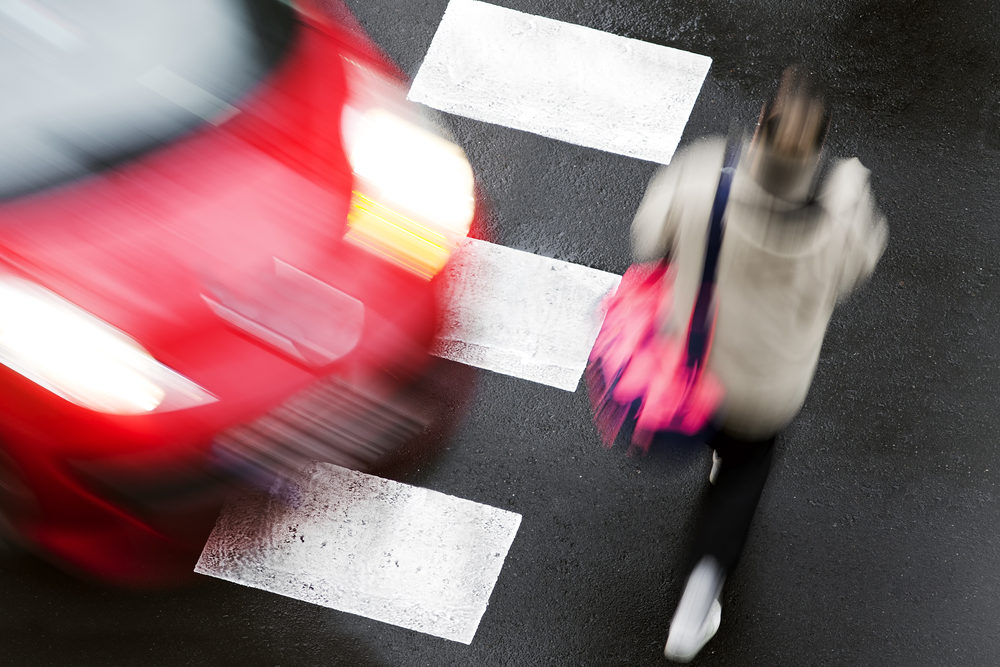
Yes. But, as usual, the simplest answer hides a great deal of complexity and nuance.
Drivers always have a duty to watch for and share the road safely with pedestrians. Failing to meet that duty by operating in a negligent or reckless manner creates legal liability, and an injured pedestrian can file claims for the payment of medical bills, compensation for pain and suffering, and other types of monetary damages.
An essential phrase here is “operating in a negligent or reckless manner.” To succeed in securing an insurance settlement or win a civil trial jury award in Virginia, the injured pedestrian and their personal injury lawyer must prove that the driver caused the crash. An easy way to establish the driver’s fault for a pedestrian crash is to show that the pedestrian was legally crossing the road in a crosswalk when the driver violated the pedestrian’s right of way.
This, however, is not the only situation in which a driver can negligently or recklessly hit and injure a pedestrian. A clear example of driver’s fault would be running up on a sidewalk or leaving the highway and striking a person standing on the shoulder.
LEARN MORE
- Why Drivers Don’t See and Yield to Pedestrians
- Determining Fault in a Pedestrian Accident
- Pedestrians Hit and Injured by Bike Riders Can File Insurance Claims
Exploring other scenarios in which a driver can be found liable for injuring a pedestrian in Virginia requires looking at the state laws regarding drivers’ duties and where people can cross streets and stand or walk in the roadway. While reading through the rest of this brief explainer article, keep in mind that any accident that would give a person grounds for pursuing a personal injury claim will also give families who lost a loved one grounds for pursuing a wrongful death claim.
Virginia Drivers’ Duties Toward Pedestrians
When sharing the road with pedestrians, Virginia drivers must
- Yield to people in crosswalks even when a crosswalk is located between stop lights or stop signs;
- Yield while turning;
- Yield at intersections on roads where the posted speed limit is 35 mph or lower;
- Yield until people have safely reached the other side of the street even if the light has changed; and
- Yield when exiting parking lots, driveways and alleys.
Failing to do one or more these things constitutes negligence. Reckless operation of a vehicle would be something like driving under the influence of drugs or alcohol.
When Crossing Outside a Crosswalk Is OK
Section 46.2-923 of the Virginia Code states that pedestrians “shall cross, wherever possible, only at intersections or marked crosswalks. Where intersections contain no marked crosswalks, pedestrians shall not be guilty of negligence as a matter of law for crossing at any such intersection or between intersections when crossing by the most direct route.”
This allows people to cross streets at corners. A pedestrian must still wait for a large break in traffic or a green light in their direction. As the statute explains, “When crossing highways, pedestrians shall not carelessly or maliciously interfere with the orderly passage of vehicles.”
When Walking in the Roadway Is OK
The laws of Virginia recognize the reality that sidewalks do not exist everywhere. If stepping onto the pavement is the only feasible option, section 46.2-928 of the state code requires the pedestrian to “keep to the extreme left side or edge thereof, or where the shoulders of the highway are of sufficient width to permit, they may walk on either shoulder thereof.”
Special Provisions for Bus Riders and Blind People
Much like the general statute on crossing streets, the rules for getting on and off buses, as well as indicating to drivers that you are visually impaired, have codified exceptions. For instance, section 46.2-932.1 of the Virginia Code requires use of a cane or a guide dog when a blind person uses a public sidewalk or crosses a street. The statute two sections later, however, is titled “Failure to use cane or guide dog not contributory negligence.”
EJL

An experienced personal injury attorney with dual licensure in Virginia and North Carolina, Eric Washburn received a B.B.A. in Finance from James Madison University—initially worked in the information technology field before obtaining his law degree from Thomas M. Cooley Law School in Lansing, Michigan. Once an Assistant Commonwealth’s Attorney in Danville, Va., Eric has been recognized by Super Lawyers Magazine as a “Rising Star” Super Lawyer in Virginia since 2014.









Comments for this article are closed.